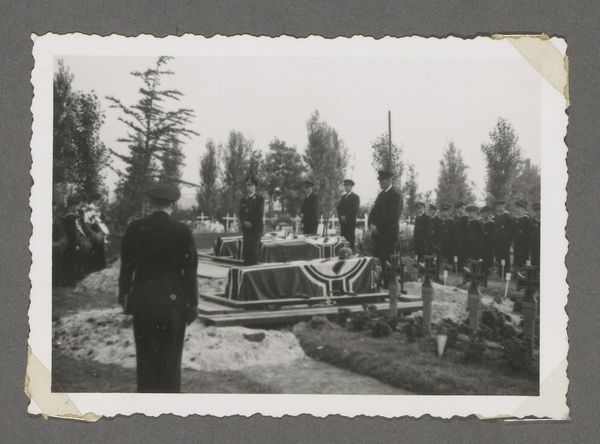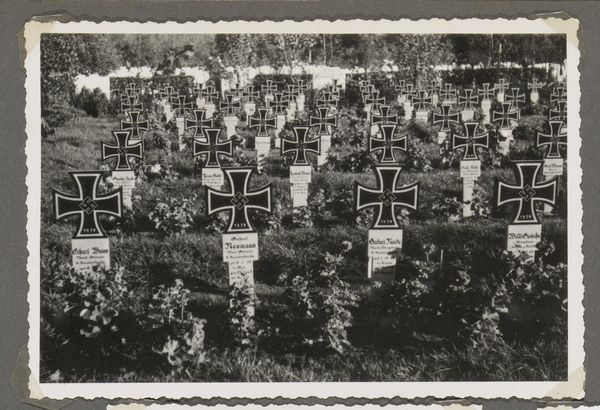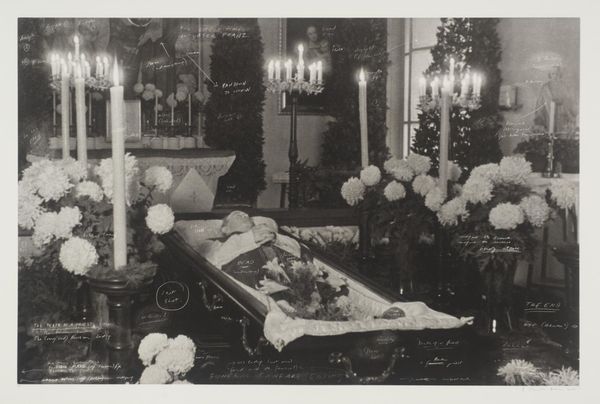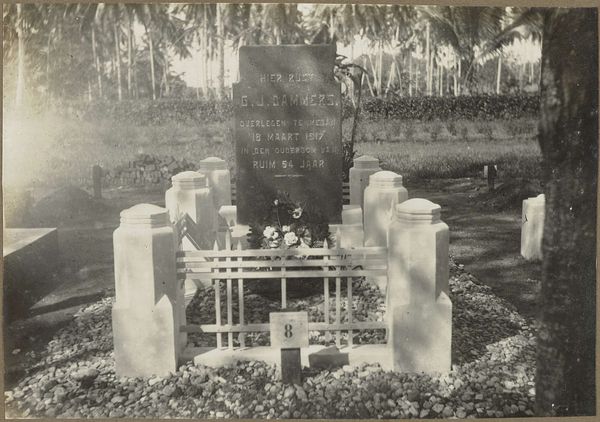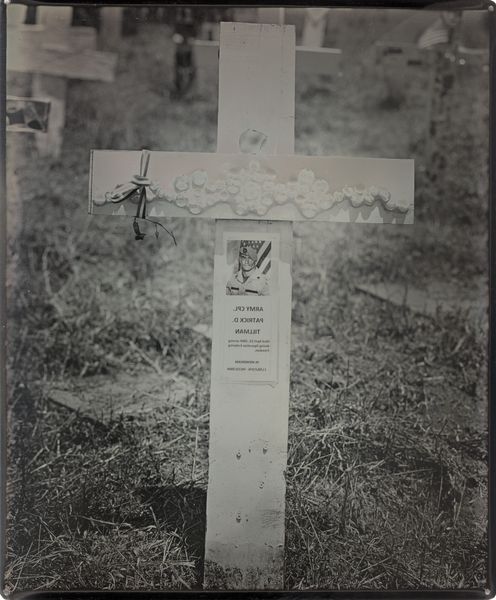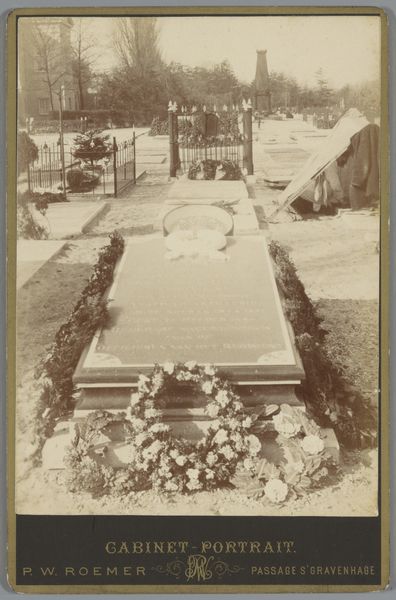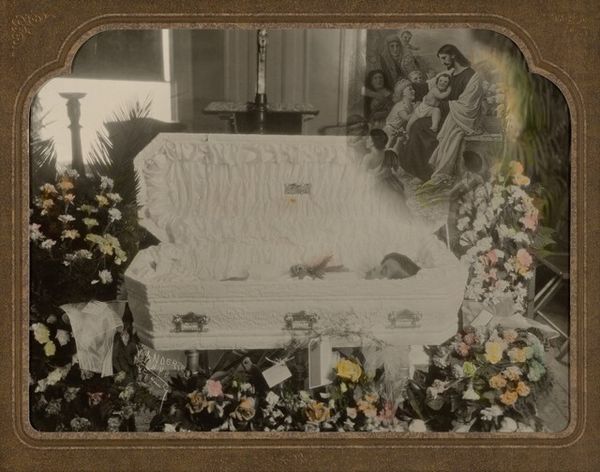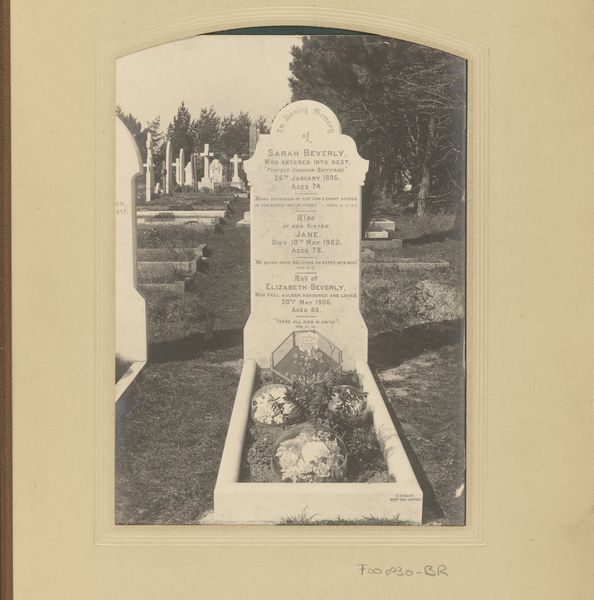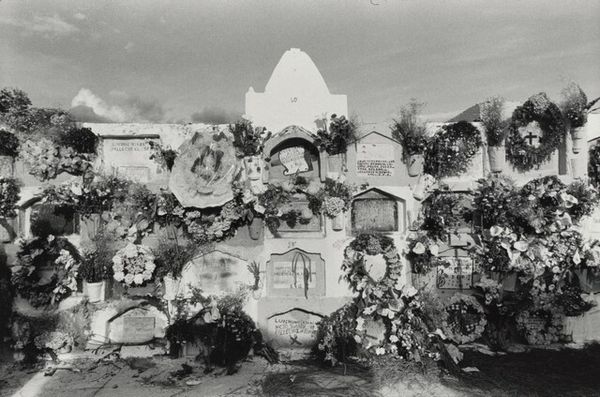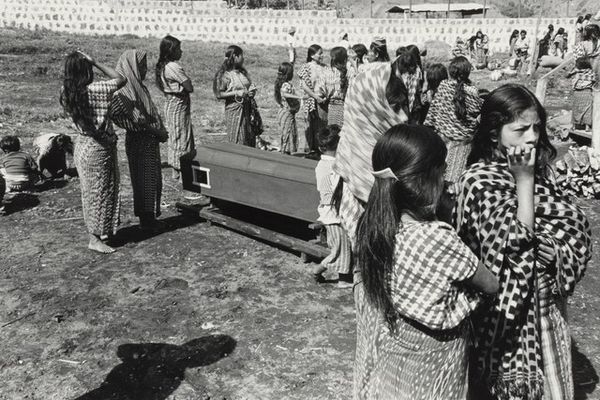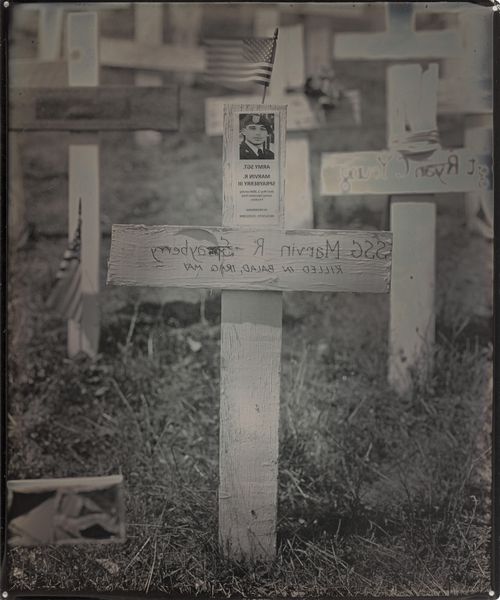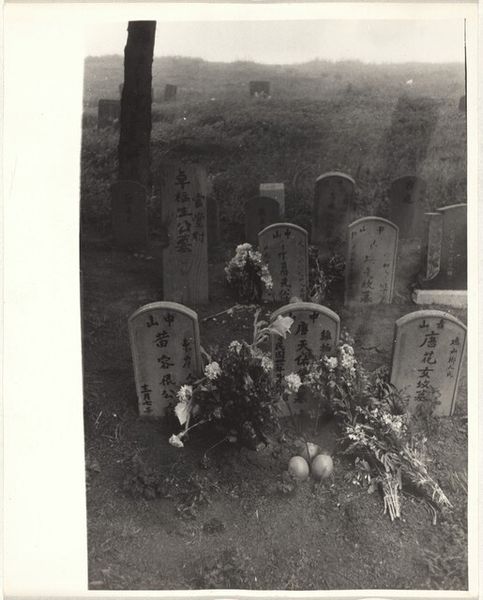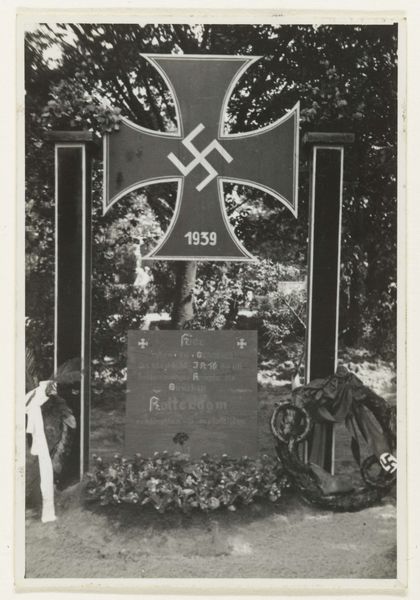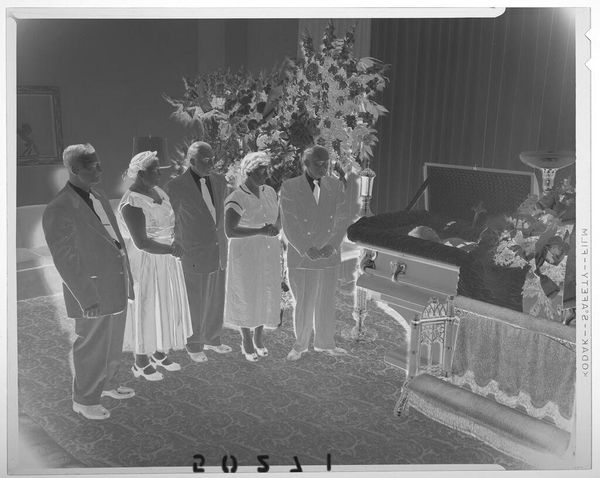
Dimensions: image: 450 x 685 mm support: 540 x 690 mm
Copyright: © Tacita Dean, courtesy Frith Street Gallery, London and Marian Goodman Gallery, New York/Paris | CC-BY-NC-ND 4.0 DEED, Photo: Tate
Curator: Tacita Dean’s "Zur Letzten Ruhe" captures a somber moment. What strikes you first about this piece? Editor: The weight of grief. It feels almost palpable, you know? The bowed heads, the muted tones...it's like a collective exhalation of sorrow frozen in time. Curator: It is a photograph overlaid with text. The scene depicts a group gathered at a graveside, a visual representation of collective mourning. Editor: The writing makes me wonder about the individual stories within that collective sorrow. Are they notes, memories? It suggests layers of untold narratives. Curator: The image carries centuries of funereal iconography. Each flower, each gesture, even the minister, speaks to a shared history of remembrance. Editor: And yet, it feels so incredibly present. It's a mirror reflecting back at us our own experiences with loss. Gives me a bit of peace of mind, if I'm honest. Curator: It is an arresting piece that prompts reflection on death, memory, and the human rituals we create around them. Editor: Yes, and how our personal stories intertwine with those bigger, timeless symbols. It’s quite thought-provoking, really.
Comments
Join the conversation
Join millions of artists and users on Artera today and experience the ultimate creative platform.
tate 7 months ago
⋮
Zur Letzten Ruhe belongs to a portfolio of twenty black and white photogravures with etching collectively entitled The Russian Ending. The portfolio was printed by Niels Borch Jensen, Copenhagen and published by Peter Blum Editions, New York in an edition of thirty-five; Tate’s copy is the fifth of ten artist’s proofs. Each image in the portfolio is derived from a postcard collected by the artist in her visits to European flea markets. Most of the images depict accidents and disasters, both man-made and natural. Superimposed on each image are white handwritten notes in the style of film directions with instructions for lighting, sound and camera movements, suggesting that the each picture is the working note for a film. The title of the series is taken from a convention in the early years of the Danish film industry when each film was produced in two versions, one with a happy ending for the American market, the other with a tragic ending for Russian audiences. Dean’s interventions encourage viewers to formulate narratives leading up to the tragic denouements in the prints, engaging and implicating the audience in the creative process.
